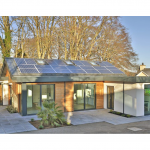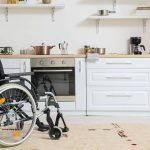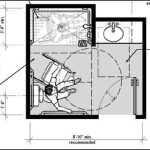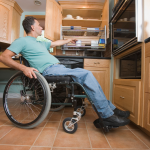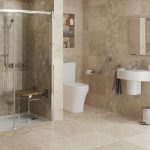Aging Gracefully: Personalized Aging in Place Home Modifications for Your Unique Journey
The retirement years for senior citizens stand as a tribute to a life rich in memories and experiences that define us. This phase is a cherished time, allowing elders to reap the rewards of their life’s work and engage deeply with their loved ones. It represents the culmination of years of hard work, perseverance, and milestones.
Our homes, our private sanctuaries, must evolve as we do. As we navigate this chapter, it becomes vital for our dwellings to resonate with our changing needs. They should prioritize comfort, safety, and, most importantly, independence. Home improvements, such as remodeling efforts, are crucial in adapting our homes to our evolving needs, ensuring they become true aging in place homes.
However, aging is not solely a chronological milestone. It’s a comprehensive journey encompassing physical changes, potential medical challenges, and evolving personal requirements. This journey may involve considerations like insurance coverage, the use of mobility aids, and understanding potential risks.
Table of Contents
Given the growing inclination towards accessible housing, there’s a heightened demand for homes that adapt based on mobility shifts and evolving healthcare necessities.
At Live in Place Designs, with years of experience in the field and backed by a team of certified aging in place specialists, we champion a holistic stance on senior housing and accessibility. We advocate for mobility-centric and aging-friendly home modifications. We pride ourselves on not just adhering to traditional home improvements but going beyond. We probe deeper, integrating crucial factors like mobility adjustments into every design facet, ensuring our solutions cater to diverse mobility needs.
In collaboration with healthcare professionals and based on feedback from older adults, we craft designs that aren’t merely theoretical but resonate with real-world needs. Leaning on their expertise, we aim for spaces that cater to individual requirements while fostering well-being. It’s noteworthy that our designs have been credited to boost mobility and housing choices by up to 20%. This is a testament to our commitment to enhancing the lives of older Americans through tailored home modifications.
Step into a rejuvenated world of home modifications, where every design aspect revolves around housing, mobility, and the holistic well-being of its residents.
Crafting Your Blueprint for Aging Gracefully
Picture your home as a canvas; the brushstrokes represent the aging in place home modifications and enhancements you select. Just as every masterpiece is unique, so should your approach to creating an aging-friendly environment. Whether it’s integrating a walk-in tub to ease mobility challenges or the inclusion of smart home features for enhanced convenience, these changes significantly augment the quality of life for older adults. Universal design principles can ensure that your home remains accessible and safe for everyone, regardless of age or ability.
Every home modification should be a thoughtful reflection of the individual’s needs. This might involve tailoring the percentage of space allocated for specific activities or integrating specific home care equipment. Whether it’s adding a bathtub or making adjustments for wheelchair access, our professional contractors and certified aging in place specialists at Live in Place Designs are here to assist.
So, how do you prioritize modifications?
Listen to Your Story:
- Begin with introspection. Reflect on areas in your home that present challenges, daily tasks that have become cumbersome, and anticipate health considerations for the future. Your home should be a reflection of the people who live in it, accommodating their changing needs.
Functional Aesthetics:
- A modification isn’t merely about utility. At Live in Place Designs, we believe in preserving the character and charm of your home while enhancing its functionality. Every aging in place home modification should seamlessly blend with the existing structure, ensuring aesthetics aren’t sacrificed.
Future-Proofing:
- Aging is dynamic. As needs change, homes should adapt. Investing in home care equipment and smart home monitoring systems can provide the necessary support as challenges arise. Don’t wait for an emergency; anticipate and act.
Consult & Collaborate:
- Personalized solutions arise from collaboration. Engage with experts who understand the intricacies of home modifications for seniors and appreciate individual nuances. Our design ethos revolves around crafting spaces that resonate with personal stories, ensuring every decision balances practicality with a personal touch.
Your home is more than a structure; it’s a testament to your life’s journey. Ensure it’s equipped to support every phase.
The Comprehensive Guide to Aging in Place Home Modifications
To craft effective aging in place home modifications, the first step is identifying unique needs. But understanding these needs is just the beginning. Making your home safer and more accessible involves exploring products and solutions tailored to address these requirements effectively.
Let’s delve into the costs and timelines associated with some of the most popular modifications:
Bathrooms: The Wellness Sanctuary
- Walk-in Showers and Tubs: These reduce the risk of tripping and cater to those who may find traditional bathtubs challenging. On average, installations cost between $2,500 and $14,000, with a timeline of 1-3 days, depending on the complexity.
- Grab Bars: Strategically placed, they not only offer support but can enhance the bathroom’s aesthetics. Installations typically cost around $100 to $300 and can be completed within a day.
Elevated Toilet Seats: These assist in reducing knee and back strain. Prices range from $40 to $200, and many can be self-installed within hours.
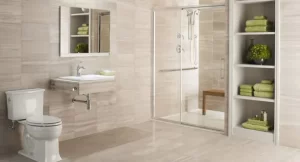

Kitchen: The Heart of the Home
- Varied Countertop Heights: They cater to both standing and seated work. Costs can be around $2,000 to $7,000, depending on materials. The installation timeline is 1-2 days.
- Elevated and Front-Controlled Appliances: For instance, elevating a microwave might cost between $200-$500 and take a few hours.
- Pull-out Shelves: A practical solution that averages $100 to $500 per shelf. Installations are typically completed in a day.

Flooring: The Foundation of Safety
- Non-Slip Flooring: A must-have for areas prone to wetness. Costs vary between $3 to $10 per square foot. The installation process spans 1-3 days, depending on the area’s size.
- Smooth Transitions Between Rooms: Transition strips help in creating a seamless flow. They average $2 to $20 per strip and can be installed within a day.
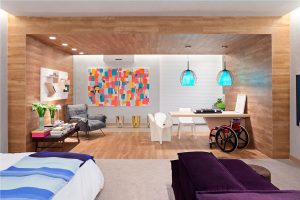
Lighting: Illuminate Your Path
- Automated Lighting: Motion-sensor lights ensure areas are well-lit when in use. They typically cost between $15 and $100 per unit and can be installed within a day.
- Glow-in-the-dark Switches: A thoughtful addition, especially for nighttime navigation. They average $5 to $20 per switch.
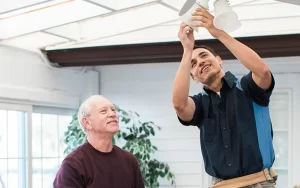
Doorways & Passageways: Seamless Transitions
- Widened Doorways: Essential for those using mobility devices. Costs range from $500 to $2,500, with a timeline of 1-2 days for completion.
- Lever Handles over Knobs: Easier to operate and cost between $20 and $50 each. Installation is typically quick, often under an hour per handle.
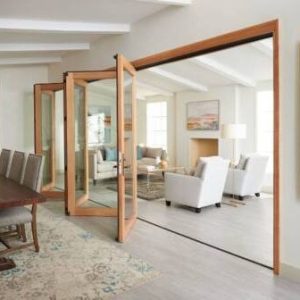
Tech Integrations: The Modern Touch
- Smart Home Systems: Devices like Amazon Echo or Google Home provide voice-controlled convenience. Prices range from $50 to $200, with quick setup times.
- Medical Alert Systems: Wearable devices that ensure help is instantly alerted in emergencies. Monthly fees range from $20 to $90, and initial setup can take a few hours.
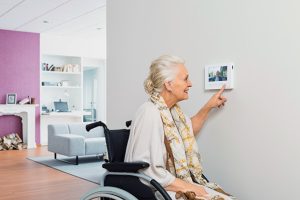
Personalizing Home Modifications: Tailoring to Health Trajectories
Aging is a unique journey for each individual. Our bodies and health evolve in distinct ways, bringing about specific challenges. But with every challenge comes an insight—a golden opportunity to craft a living environment that’s not just safe, but also supportive of our overall well-being.
Recognizing Individual Needs:
Every person’s health trajectory is singular. What arthritis demands in terms of modifications for one individual might need adaptations catering to diminished vision or mobility constraints. Recognizing these unique needs is the cornerstone of a personalized aging-in-place strategy.
Progressive Planning:
Certain health conditions, such as Parkinson’s or osteoporosis, may progress with time. It’s essential to anticipate future needs based on current health considerations to ensure adaptive and enduring modifications.
Product Selection with Purpose:
It’s not merely about installing grab bars or ramps; it’s about choosing the right ones. Someone with arthritis might benefit from a particular handle type, while another might require a specific material for better grip. Every product should meet individual health requirements.
Adaptive Layouts:
Optimal space planning is paramount, especially when considering health trajectories. The layout should minimize unnecessary movement, reduce strain, and prioritize comfort. This could involve rearranging furniture, altering room purposes, or even more significant architectural changes.
Continuous Consultation and Feedback:
Our commitment doesn’t end once modifications are in place. We believe in regular check-ins and feedback loops to ensure the living environment continuously adapts to evolving health needs.
Tailored Home Modifications for Neurodegenerative Diseases
Enhancing Quality of Life for Parkinson’s, MS, and ALS Patients
Parkinson’s Disease:
Overview: Parkinson’s is a degenerative disorder affecting the nervous system, leading to movement challenges. Symptoms often include tremors, stiffness, and balance issues which can progress over time. Learn more about Gadgets for Parkinson’s patients & Essential Home Modifications.
Recommended Modifications:
- Stability Aids: Install grab bars and handrails, particularly in bathrooms and near stairs, to provide support and prevent falls.
- Flooring: Opt for non-slip flooring materials to minimize fall risks.
- Voice-activated Systems: Simplify daily tasks by integrating voice-activated controls for lights, thermostats, and more.
- Space Optimization: Create open floor plans, reducing obstructions to ensure easier mobility.
Multiple Sclerosis (MS):
Overview: MS is an autoimmune condition that targets the central nervous system. Symptoms can vary but often include fatigue, difficulty in walking, numbness, and muscle spasms. Learn more about Designing Home Modifications for Multiple Sclerosis.
Recommended Modifications:
- Elevated Mobility: Incorporate ramps and stairlifts for easier movement between different levels of the home.
- Climate Management: Given the temperature sensitivity in MS patients, ensure a well-maintained HVAC system and use insulating materials.
- Flexible Furniture: Use adjustable chairs and beds to cater to varying needs, especially during muscle spasms or episodes of weakness.
- Automated Home Systems: Adopt remote-controlled systems for lights, blinds, and appliances to cater to the fatigue commonly associated with MS.
Amyotrophic Lateral Sclerosis (ALS):
Overview: Commonly known as Lou Gehrig’s disease, ALS is a relentless neurodegenerative condition that impacts nerve cells, leading to a decline in muscle control. Learn more about ALS Home Modifications to Make Life Easier.
Recommended Modifications:
- Wheelchair-friendly Design: Incorporate wider doorways, ramps, and barrier-free layouts to accommodate reduced mobility.
- Advanced Control Systems: As the disease progresses, speech or movement might be limited. Systems guided by voice or eye-tracking can empower patients to control their surroundings.
- Adaptable Living Spaces: Design kitchens and bathrooms with adjustable counters, sinks, and appliances. Ensure easy access to showers and toilets.
- Ceiling Lift Systems: In advanced ALS stages, these systems are invaluable for assisting movement between rooms or for transfers.

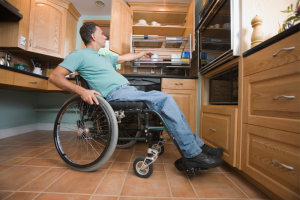
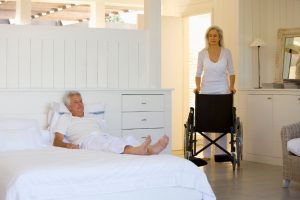
Conclusion: Navigating life with neurodegenerative diseases like Parkinson’s, MS, or ALS presents unique hurdles. Yet, with strategic home modifications, we can bolster not only safety but also autonomy and self-respect for affected individuals. Adapting our living spaces to specific chronic conditions crafts a supportive environment, harmonizing with the evolving needs of its residents.
Embracing Technology: The Digital Age of Aging in Place
In this modern era, technology isn’t just a luxury—it’s a pathway to a more comfortable and independent life, particularly for older adults. As our world becomes increasingly digital, smart home solutions offer the tools necessary to maintain independence, safety, and active participation.
Smart Home Systems: Effortless Control at Your Command
- Safety: Contemporary smart home systems prioritize the well-being of their users. Automated lighting can reduce accidents in dim conditions, while voice-activated controls lessen the need for physical interactions, minimizing potential risks.
- Ease of Use: The intuitive nature of voice commands allows seniors to effortlessly control lights, adjust thermostats, or even summon help without grappling with complex interfaces.
Medical Alert Systems: Immediate Assistance, Always On Standby
- Safety: With real-time fall detection, wearable devices ensure immediate alerts in case of mishaps, offering peace of mind.
- Ease of Use: Crafted with seniors in mind, a straightforward button press or voice command can dispatch alerts, ensuring that aid is always within reach.
Telehealth Platforms: Your Health Check-In, Now Online
- Safety: Regular monitoring and virtual consultations minimize the need for consistent in-person visits, reducing potential health risks.
- Ease of Use: Straightforward interfaces let seniors seamlessly connect with their healthcare providers, simplifying routine check-ins.
Home Monitoring: Always Alert, Always Watching
- Safety: Advanced sensors can identify abnormal activities—like a forgotten stove or an open door—ensuring a safety net is always in place.
- Ease of Use: Automated alerts ensure that seniors don’t have to monitor their surroundings constantly. The system takes care of it.
Virtual Companionship: Staying Connected in the Digital Era
- Safety: Secure platforms enable seniors to engage with loved ones or virtual communities without fretting about online vulnerabilities.
- Ease of Use: Simple interfaces and step-by-step setups ensure that even those new to technology can easily connect with family or online communities.
Assistive Robots: Your Helping Hand Around the House
- Safety: These robotic aides have safety protocols, ensuring smooth operation without causing harm or obstructions.
- Ease of Use: With intuitive, often voice-activated controls, seniors can effortlessly direct these robots, whether for fetching items or offering medication reminders.
Incorporating technology into the home modification journey doesn’t merely address physical needs. It also caters to the emotional and psychological facets of aging, ensuring seniors remain connected, supported, and empowered. Embedding technology seamlessly into everyday life fosters an environment that enriches every dimension of senior living.
ROI of Aging in Place: More Than Just Financials
When discussing the ‘return on investment’ (ROI) of aging in place home modifications, it’s tempting to focus solely on financial dimensions. But the true ROI transcends mere monetary considerations.
Financial Savings: A Sensible Investment
According to the Genworth 2020 Cost of Care Survey, “the monthly rate for assisted living facility care ranged from $3,000 in Missouri to $6,978 in the District of Columbia.” When compared, the average expense for aging in place home modifications fluctuates between $25,000 and $50,000, depending on the scope of changes. By customizing your existing residence, you bypass recurring hefty fees while bolstering your property’s market value.
Emotional Well-being: Home is Where the Heart is
Research published in the Archives of Psychiatric Nursing determined a correlation between old age adaptation, aging in place, and depression in older adults. Staying in a familiar environment offers emotional stability, curtailing feelings of displacement and uprooting.
Independence Retained: Autonomy in Golden Years
Data from the AARP suggests that 76% of adults aged 50 and above desire to stay in their homes throughout their senior years. Customized homes allow them to maintain daily routines, fostering autonomy and enhancing overall contentment.
Personalized Solutions: Tailoring to Individual Needs
A study from the National Institutes of Health underscores how Home Modifications Reduce Care Needs of Older People and People with Disabilities. Tailoring your environment ensures that adaptations perfectly match personal requirements, enhancing daily life.
Community and Social Ties: Connection Matters
Findings from the Journal of Aging and Health reveal that seniors maintaining community connections exhibit superior cognitive function and a slower rate of cognitive decline. Being an active part of a community significantly contributes to mental wellness and a sense of belonging.
Future Resale Value: A Forward-Thinking Investment
A report by the National Association of Home Builders (NAHB) posits that homes equipped with aging-friendly modifications, such as zero-step entrances and wider doorways, can augment resale value by up to 7%. Potential buyers, especially those considering multi-generational living, will likely value these enhancements.
The decision to adapt a home for aging in place is multifaceted. It’s a commitment to physical wellness, emotional health, and financial foresight. At [Your Company Name], we grasp the depth of this decision and pledge to ensure the benefits are comprehensive, enduring, and customized to every individual’s unique life journey.25
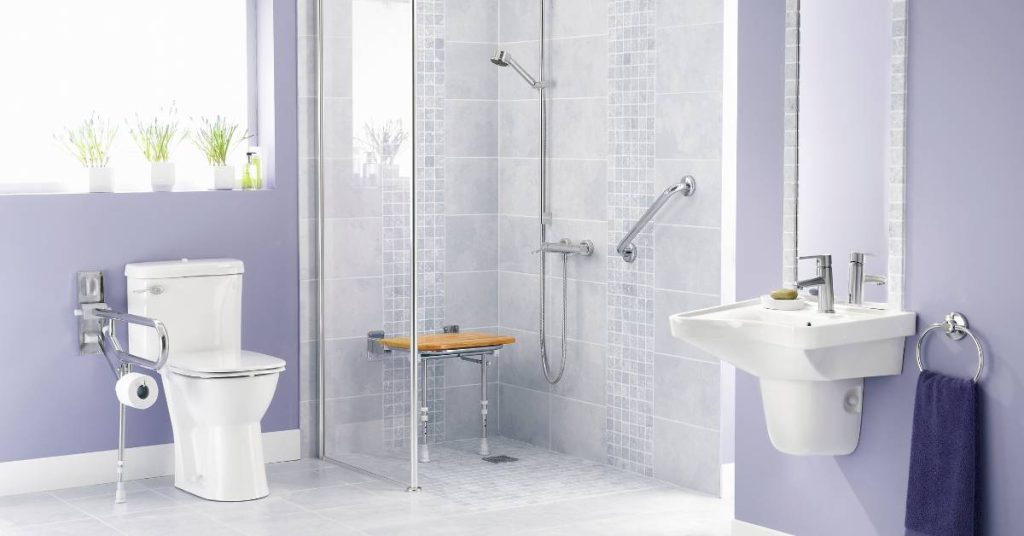
Common Concerns about Aging in Place: Addressing Queries Head-On
Embarking on the journey of aging in place home modifications naturally raises many questions and concerns. From the practicality of specific installations to the enduring benefits of tech integrations, our clients often seek insights and clarifications on various facets. Here’s a brief breakdown of frequently encountered queries, along with our expert insights.
While certain modifications might require extensive work, our team at Live in Place Designs always prioritizes minimal disruption, ensuring that residents can continue their daily routines with as little inconvenience as possible.
Every individual’s needs are unique. We recommend starting with a comprehensive home assessment, followed by consultations with our team of experts to identify the most suitable and beneficial modifications.
Quality home modifications, especially those aligned with universal design principles, can potentially increase a property’s value. Future homeowners, especially those with older family members or those planning for their own future, often see value in pre-modified homes.
Smart home systems, ranging from voice-activated controls to advanced home monitoring systems, offer enhanced safety, convenience, and independence. They can automate daily tasks, provide immediate medical alerts, and ensure a secure living environment.
Yes, various programs and initiatives, often run by area agencies on aging or non-profit organizations, offer financial assistance for home modifications. Our team can guide you on available options in your locality.
For a more detailed breakdown of these and other queries, we encourage you to visit our comprehensive FAQ page. This resource delves deeper into each topic, offering insights rooted in our extensive experience in the field.
Aging in Place with Live in Place Designs: Your Trusted Partner
At Live in Place Designs, our mission transcends mere home modifications. We envision a world where seniors don’t just age but do so with grace, dignity, and, above all, in the nurturing environment of their own homes. Our approach to aging in place home modifications is all-encompassing, innovative, and profoundly personal. We don’t just propose solutions; we craft experiences tailored to each individual’s journey.
What Sets Us Apart?
Personalized Consultations:
- Our team delves deep to understand your unique needs, health trajectories, and aspirations. This insight is foundational to our design ethos.
Collaborative Approach:
- We firmly believe that the finest solutions emerge from collaboration. Our method amalgamates the expertise of a diverse team of designers, healthcare professionals, and technologists.
Forward-Thinking Designs:
- We don’t just design for the present but also for the future. Our strategies anticipate and adapt to evolving needs, ensuring your home remains your sanctuary, no matter what the future holds.
Seamless Tech Integration:
- Our modern solutions integrate technology effortlessly into your living space, offering both convenience and a touch of modern luxury.
Unwavering Commitment to Excellence:
- Every aspect of our operation is infused with a commitment to excellence. From the products we endorse to the designs we draft, quality remains paramount.
CAPS Certified
- CAPS stands for Certified Aging-in-Place Specialist. CAPS professionals are trained to help older adults with home renovations.
Your Next Steps: Navigating the Journey of Graceful Aging
If you’re ready to embrace the journey of aging gracefully, here’s a streamlined path to help you get started:
1. Reach Out:
Initiate a conversation with our team. We are keenly interested in hearing your story and understanding your unique requirements and aspirations.
2. Personalized Assessment:
Armed with insights from our initial conversation, our team will conduct an in-depth assessment of your home. This assessment will identify potential areas for enhancement, ensuring every corner of your home is optimized for your comfort and safety.
3. Design & Blueprinting:
Drawing from your inputs and our assessment’s findings, we’ll conceptualize a personalized design blueprint tailored for your home modifications. This blueprint will serve as a roadmap, detailing every proposed change and its rationale.
4. Implementation:
Once you’re entirely content with the design, our dedicated team will oversee the transformation process. We will ensure each modification is executed flawlessly, with minimal disruption to your daily life.
5. Feedback & Refinement:
After the modifications are in place, our engagement doesn’t end. We value your feedback and stand ready to make any necessary refinements to ensure your home resonates perfectly with your needs.
Your home is more than bricks and mortar; it’s a testament to your journey. Let’s craft it to support every upcoming chapter of your life, ensuring it remains a haven of comfort, safety, and cherished memories.
Connect with Live in Place Designs
For consultations, inquiries, or to delve deeper into our myriad services, please connect with Live in Place Designs. Our team is eagerly waiting to assist you, ensuring your home mirrors your aspirations and provides unwavering support as you age gracefully.

